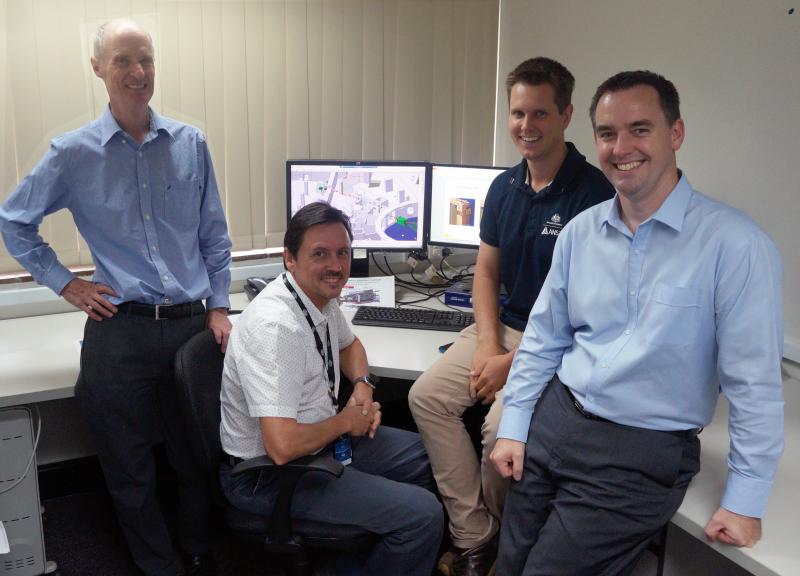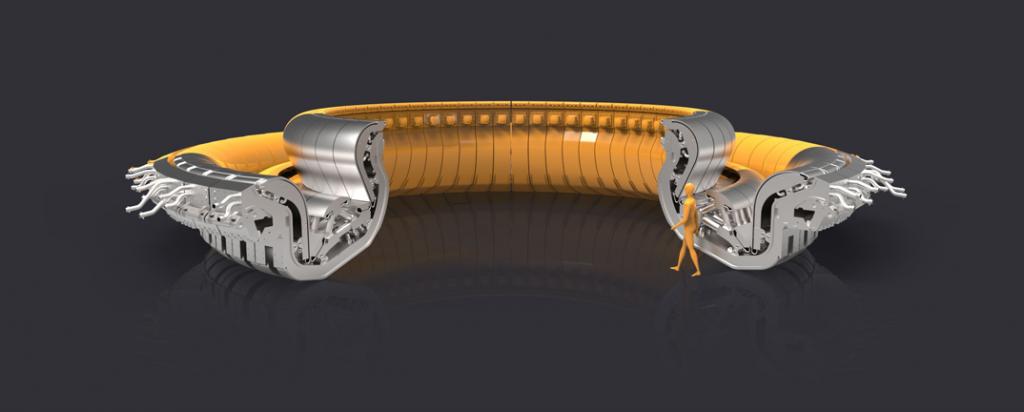

Published on the 2nd April 2019 by ANSTO Staff
A team of scientists from the Australian National University and ANSTO who represent Australia on the world largest engineering project ITER has reported on their plasma diagnostics project. The report was presented to international panel for the Conceptual Design Review at an ITER meeting in France in March.
ANSTO Project Liaison Dr Richard Garrett, who attended the meeting via video link, said that the review was very well received and may lead to an expanded role for Australia in one area of diagnostics for ITER.
The Australian group is developing one of over 50 diagnostic systems, a boundary flow monitor, which is focused on the ITER divertor.
This enormous component, which comprises 54 cassette assemblies, positioned at the bottom of the ITER “tokamak” vacuum vessel, controls the exhaust of waste gas and impurities from the reactor.
It is the only area where plasma at the highest heat flux comes into contact with the reactor wall.
Video courtesy of the Australia National University
Advanced diagnostics for the divertor are needed to measure plasma flows, temperature, impurities isotope ratios of helium, deuterium and tritium and other parameters.
The underlying technology uses advanced coherence imaging systems, developed at ANU, to obtain time-resolved 2D projection images of the spectral and polarisation properties of the plasma.
ITER representatives were very pleased with the progress of the mechanical design for the components that will guide light from the divertor, via one of the diagnostic port cells arranged around the middle of the tokamak, along a custom-designed 36 metre long light path to the diagnostics gallery. The flow monitor instruments will be located in the diagnostics gallery.
The review panel was very complimentary of the standard of the Australian submission and has issued only a moderate number of actions, known as chits, before the next design review.
“It’s rare to see a design review with only 21 chits. It is also very positive to see that the panel recommended additional important roles for this diagnostic. It was really well done,” said Martin Kocan ITER plasma boundary diagnostician and Australia’s primary contact at ITER for the project.
Head of the Australian University ITER team and ITER science fellow, Dr John Howard said, “I offer my thanks to the ANSTO team. It really has been a pleasure to work with them. It obviously couldn’t have progressed without their very professional support.”
“A number of people at ANSTO have made valuable contributions to the work on the components, including project engineer Craig Hughes, CAD technician Scott Hopkins and instrumentation and control engineer Ryan Beeby and their work has been acknowledged at ITER,” said Garrett.
Although Australia is not a member state of the project, in October 2016 ANSTO signed a cooperation agreement with ITER to formalise participation on diagnostic systems, theory and modelling of advanced materials.